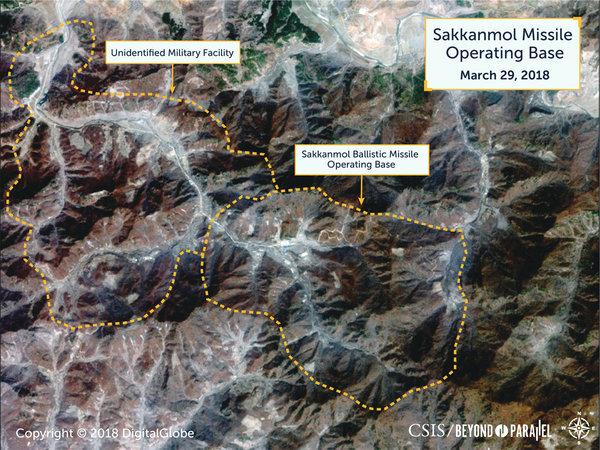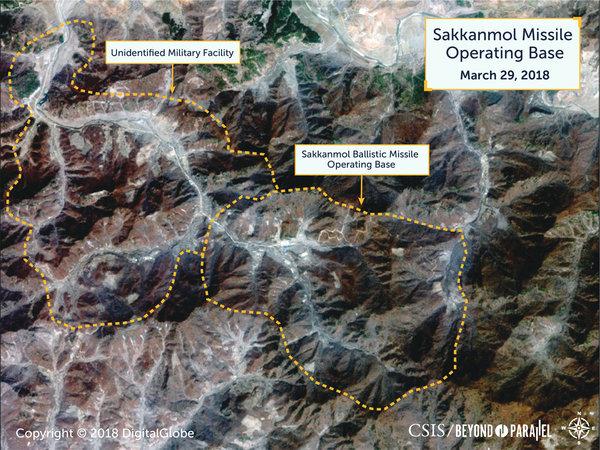
What is the state of diplomacy on the Korean peninsula? Are we again heading toward the lip of war, or is progress being made at an expected pace? Are there Asian Neocons fanning the flames for conflict in Pyongyang much as others did with Baghdad?
A year ago, in November 2017, John Brennan estimated the chance of a war with North Korea at 20 to 25 percent. Richard Haass, president of the Council on Foreign Relations, said the odds were 50/50. The New York Times claimed we were “slouching toward war” with the North, on a “collision course.” National security adviser HR McMaster said North Korea represented “the greatest immediate threat to the United States” and that the potential for war with the communist nation grew each day. The US lacked an ambassador in Seoul; Victor Cha was rejected by Trump because, according to “sources and reports,” he didn’t support a preemptive strike on Pyongyang. It was reported the US was “imminently preparing for an attack on North Korea,” driven in part by hawks like Mike Pompeo and John Bolton.
All that was wrong.
Cha, it appears, didn’t in fact support what Trump actually was planning: not a preemptive strike, but a summit meeting with Kim Jong Un, held some five months ago in Singapore following a first try at courtship aside the Seoul Olympics in January 2018. World leaders meeting to talk peace is historically seen as a good thing. Yet the American media consensus was a president they believe is roundly despised globally conveyed “legitimacy” on Kim Jong Un, no matter that his family has ruled North Korea for some seven decades, and his country already holds a seat at the United Nations. No shortage of experts from South Korea universities and American think tanks were found to support those claims.
The media generally ignored, in return for the US postponing a handful of military exercises (“concessions,” which were deeply criticized by an American media which has failed to note the US has actually resumed some exercises), the North unilaterally stopped ICBM testing (the missiles which might someday be able to reach the US) and nuclear detonations. It released American hostages, and took steps to close down two nuclear missile facilities. Kim Jong-un fired top military leaders who dissented over his approaches to South Korea and the United States.
Officials from North and South now meet regularly, and US diplomats engage with both sides on an ongoing basis; Secretary of State Mike Pompeo has been to Pyongyang. Numerous practical steps have been taken along the DMZ to reduce the chance of accidents. South Korea’s unification minister in charge of North Korea issues Cho Myoung-gyon will visit the United States this week, where he is expected to meet Pompeo. This is the first time in four years for South Korea’s unification minister to visit Washington. On the last visit, in 2014, then-Secretary of State John Kerry refused to meet with his predecessor in line with the Obama (and Bush) administrations’ policy of ignoring North Korea in hopes the problem would go away.
Yet the headlines this week in the New York Times and other major US outlets scream of a “great deception” by the North Koreans, evidenced by a hardline think tank — helmed in part by Victor Cha — “discovering” North Korean missile facilities already long known to US intelligence (Cha’s lo-rez commercial satellite photos are dated March, months before the Trump-Kim summit, so everyone who mattered already knew.) In a matter of a few paragraphs, Cha and the Times blow this “discovery” up to announce, without any evidence, “What everybody is worried about is that Trump is going to accept a bad deal — they give us a single test site and dismantle a few other things, and in return they get a peace agreement” that formally ends the Korean War. Mr. Trump, he said, “would then declare victory, say he got more than any other American president ever got, and the threat would still be there.”
What is the real state of diplomacy on the Korean peninsula? Are we again heading toward the lip of war?
Of course not. South Korea’s presidential spokesperson put those “new” missile facilities into the perspective Trump’s critics lack, saying “North Korea has never promised to shut down this missile base. It has never signed any agreement, any negotiation that makes shutting down missile bases mandatory… There is no agreement, no negotiation that makes it necessary for it to be declared.” In other words, there can be no deception where there was no agreement.
To call what the Times discovered a “deception” is deeply misleading. The Singapore declaration and the inter-Korean summit declarations of April 27 and September 19 this year do not commit Pyongyang to disclose the sites. What is new to the Times is actually old news; Kim Jong Un in his January 2018 New Year’s Day guidance stated North Korea would shift to the mass producing nuclear weapons in such facilities. “The nuclear weapons research sector and the rocket industry should mass-produce nuclear warheads and ballistic missiles, the power and reliability of which have already been proved to the full, to give a spur to the efforts for deploying them for action,” Kim said. The Times in fact more or less acknowledged all this in September, before being surprised by it in November.
And the Times’ big scary takeaway, that the old/new facilities are in caves, confuses tactical concealment with some sort of nefarious political “deception.” Did they expect the missiles to be worked on in the parking lot outside Kim’s villa?
One issue only lightly touched by a western media obsessed with parsing tweets as their stab at journalism is the ongoing rush forward driven by the two Koreas themselves, what under any other media climate would be hailed as a huge series of successes but which falls in 2018 under the Trump Is Always Wrong Shadow. In a short time the two states established psuedo-embassies just north of the DMZ, where representatives from the two Koreas have met more than 60 times. The office has become a clearinghouse for over a dozen projects launched during the summit. There are plans for a massive bi-national project to link roads and railroads severed during the Korean War.
North and South Korea have begun removing landmines from the border, drawn back some troops, and most recently held a third leaders’ summit in September in Pyongyang where North Korean leader Kim offered to permanently dismantle two key ICBM facilities under the observation of outside experts. He also offered to negotiate further on the permanent shut down of the nuclear facility at Yongbyon. South Korean President Moon Jae-In, for his part, better than the US understands the future is ultimately about economics, not nukes. Moon seeks sanctions relief as negotiations move forward (little is ever accomplished without some give and take.) “I believe the international community needs to provide assurances that North Korea has made the right choice to denuclearize and encourage North Korea to speed up the process,” he said this week in Paris during a visit with French President Emmanuel Macron. If the western media is correct that Trump is being duped, played, deceived, and cheated by the North, what must they think about the faster pace set by the South? After all, a US miscalculation means we all switch from Samsung to Apple phones made in China, while South Korea risks being turned into a wasteland dotted only with signs for Nuka Cola.
Left off to the side is that it has been only five months since the historic summit in Singapore. Obama’s agreement with Iran, which did not even involve actual working nukes, took almost two years to conclude. Cold War negotiations with the Soviet Union ran across administrations, extending the broader process into decades of talks, and were aimed at goals much shorter than full denuclearization. Five months is barely enough time to grow a decent garden, never mind resolve multinational problems that reach back to 1945.
With North Korea, there is no history of trust, no basis of goodwill to build on. That all has to be created, built from scratch, as part of the heavy lifting of diplomacy. The ultimate goal — denuclearization — may or may not someday come to pass, but if it does it will be the result of years of more small steps forward than small steps back. Diplomacy is about moving the goalposts and embracing the long game, not playing chicken. It will require the North’s nuclear weapons to become unnecessary, as the North agrees to and is allowed to become so engaged with the global system that it finds itself no longer in need of such a powerful deterrence to attacks by its neighbors. Diplomacy requires one to at least understand the opponent’s goals and motivations, even if you don’t agree with them.
There exists an industry of sorts devoted to portraying North Korea as an eviler than evil empire, with Kim as a parody of the movie Dr. Evil. These hardliners, ensconced mostly in universities in South Korea and think tanks in the US, have been around since the Cold War to make sure the case for the militarization of South Korea and American support for various South Korean military dictators never lacked public advocates. They act as mouthpieces for North Korean defectors with horror stories, and are quick to seize on anything to amplify the threat. Older readers will remember similar mostly defunct “industries” set up to do the same over the actions of Cuba, China, and the Soviet Union once (though the Red Threat gang is trying to make a comeback over Bond villian wanna-be Putin.)
Victor Cha himself is a kind of one man gloom machine, writing regularly of the impossibility of denuclearization. His old articles focus fearfully on meetings canceled them (but since successfully concluded; fatalism ignores the future) he in fact represents a kind of Asian neocon, an industry dedicated to the impossibility of peace on the peninsula as long as the Kim dynasty remains in power. Cha’s home organization, the Center for Strategic and International Studies, for example, features multiple former Secretaries of Defense on its board and as trustees, and is well-funded by elements of the military industrial complex. Of the plan to link railroads across the DMZ, what any sane person would see as progress, the organization grumbled the “move is expected to increase friction with its traditional ally Washington over the pace of inter-Korean engagement.”
So shame on those hardline groups — let’s call them Asian Neocons, for they want regime change in the North in the same way as Cheney, Rumsfeld, et al, wanted it in the Middle East — and shame on the New York Times for morphing its Trump-is-always-wrong editorial policy into presenting something long-known to US intelligence as something new enough to declare deception has overtaken the diplomatic long game on the Korean Peninsula. As they did during the run up to the Iraq War, the Times is once again serving as a platform for those who cannot see or will not wait for a peaceful way forward.
Deception? The deception, it is clear, is all (again) on the side of the neocons. They seek to destroy any chance of lasting peace with unrealistic expectations and by announcing failure at goals never actually set. Because if not diplomacy, then what is the alternative? Theirs is not pessimism, it is fatalism. Success instead should be measured by the continued absence of war and the continued sense that war is increasingly unlikely. Anyone demanding more than that wants things to fail.
Reprinted with permission from Medium.com.

